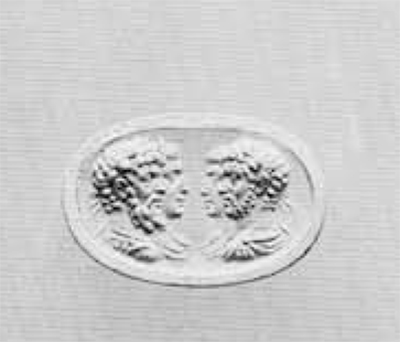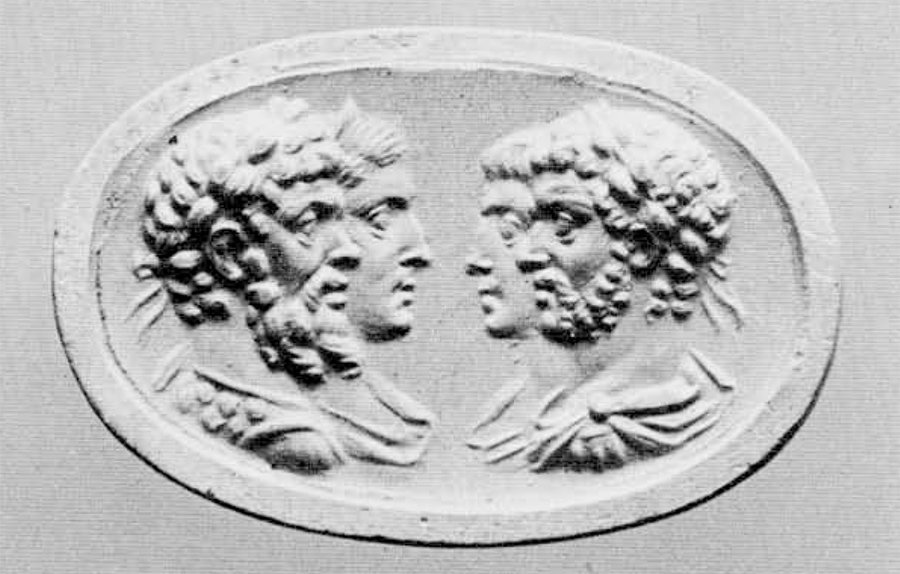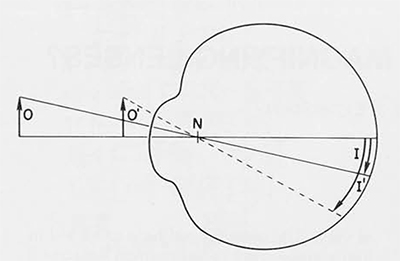
One of the purposes of our paper in the Winter 1981 issue of Expedition called “Close Work Without Magnifying Lenses?” was to present a hypothetical explanation for the ability of ancient craftsmen to effect minute detail before the invention of magnifying lenses. We presented evidence from the scientific disciplines of optics, opthamology, medical genetics, population genetics, archaeology and art history to show why craftsmen with unusually close vision, namely myopes, could have accomplished such work.
Another purpose was to stimulate discussion as to alternative explanations. Several have been brought to our attention directly and by letters to the editor. We were invited to discuss some of these.

1: The Pin Hole Effect
It was suggested that magnification could easily be achieved and utilized by looking at an object through a pin hole. Such a method, it was stated, was well within the technical and empiric possibilities of the craftsmen in the ancient world.
Can a pin hole produce magnification? Is it a practical method for doing close work? According to Dr. Yale Solomon, a clinical opthamologist, (personal communication) the pin hole effect is well known and routinely used for eye examinations. It unquestionably provides a clearer image but produces only a slight increase in magnification. The reason for the clarity of the image is that the rays of light are focused centrally on the fovea of the retina where there is the greatest concentration of rods and cones. Another reason for the increase in clarity is that refractive errors produced by utilizing the periphery of the lens and cornea are eliminated.
The arguments against the pin hole are that its use is impractical from a craft point of view. Utilizing the pin hole as an aid in doing close work is impractical because it presupposes that the craftsman will first look at the work through the pin hole, then set it down and work from memory. The limitations are obvious. It is conceivable that a stand was made to hold an opaque object with a pin hole so that both hands were free. This might avoid the necessity of alternately looking then working. However, a stand would be required in an uncraftsmanlike vertical position, because if it were horizontal the light on the work would be virtually eliminated. Professor Boardman’s previously quoted views about magnifying lenses could well be paraphrased for stands, regardless of their design, namely “… (none) have been found and it is unlikely that Pliny would have failed to mention their use.”
How does the pin hole compare with the close vision of the myope?
(1) Magnification in myopia is incomparably greater.
(2) Since there is no lens with the pin hole, resolution is significantly less sharp.
(3) Since the pin hole is utilized by one eye there is no binocular fusion or stereoptic effect, which is automatic in the myope.
(4) The pin hole necessitates an unreasonably restricted field of work and light, whereas the myope has normal peripheral vision and a full work field and light.
(5) The pin hole, like squinting for a lengthly period, can produce a strain. By comparison, myopic vision is unstrained. Also, it remains unstrained even with aging, thereby providing an advantage for the myope even over the emmetrope (normal) whose close vision becomes more distant with age (presbyopia).
According to the American Association of Ophthamology there are 40,000,000 myopes in the United States and four times as many among the Chinese and Japanese. When one considers that there were virtually none in hunting civilizations, the effect of relaxation of selection which the population geneticists have described seems quite evident.
2: Utilizing water in a clear curved glass vessel
Another suggestion to explain close work is that water in a clear curved glass vessel will produce magnification. The magnification produced by water, due to its index of refraction, known as index magnification, is minimal. It should also be remembered that clear glass was not invented until Roman times, thousands of years after many artifacts with minute detail had been produced. Curved glass vessels would very likely have produced considerable distortion.

3: Pure hand-to-hand awareness and talent
Another suggestion to explain close work is that it could be done by pure hand-to-hand awareness, as in fine lace work and needle-point. While it may be true for these crafts, it is difficult to imagine how it could be done for the other crafts described where clear vision is a necessity. As far as special talent, it goes without saying that there is more to skilled craftsmanship than seeing. Indeed, talent would be a necessity for much of the remarkable close work that was done in the ancient world. Quite obviously the question of talent is complicated. However, given equal talent, the advantage of the myope’s close vision seems quite evident.
Acknowledgment
Again, we express our appreciation to opthamologist Dr. Yale Solomon for his thoughtful suggestions and advice.
